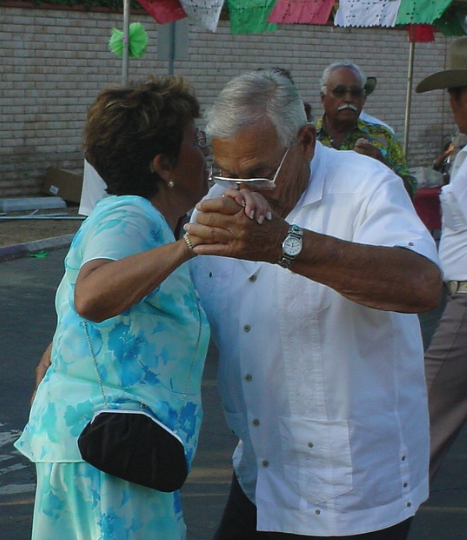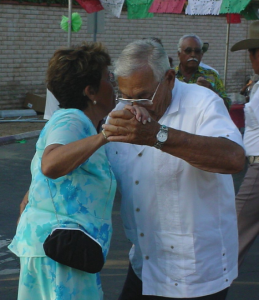Salsa Dancing Helps Improve Latino Seniors’ Health

 By Hope Gillette, Voxxi
By Hope Gillette, Voxxi
David Marquez, lead researcher of the initiative and UIC associate professor of kinesiology and nutrition , says the initiative is an important step toward addressing inactivity among seniors — Latinos in particular, who have some of the lowest activity levels and higher risks for age-related conditions.
 “Older Latinos are also at high risk of developing disabilities, and one of our long-term goals is to prevent disability among this disadvantaged group,” Marquez said in a university statement.
“Older Latinos are also at high risk of developing disabilities, and one of our long-term goals is to prevent disability among this disadvantaged group,” Marquez said in a university statement.
According to the professor, Latinos between the ages of 65 and 74 are less likely than other seniors to participate in physical leisure-time activities. Latino seniors are also twice as likely to report difficulty walking as are non-Latino whites, and to develop symptoms of Alzheimer’s disease an average of seven years earlier.
Because dancing is widely accepted and enjoyed among the Latino community, Marquez and Miguel Mendez, a Latin dance instructor, joined forces to create a senior-specific dance program called “Bailamos.”
The goal of this 4-month program is to improve balance, cognitive ability and mobility overall among participating Latino seniors, as previous research suggests dancing can indeed help accomplish such goals.
In the program, the tempo of the music is adjusted, so it slows down enough to allow Latino seniors to perform more complicated dance steps safely.
Benefits of dancing for Latino seniors
“Creative interventions such as dance-based therapy have the potential to significantly reduce falls in older persons,” Jean Krampe, a registered nurse and doctoral student in the Sinclair School of Nursing, said in a University of Missouri news report. “In the studies, we found improved levels of balance, gait and overall functionality among seniors who participated in regular dance-therapy sessions. Nursing and elder care professionals can help move these programs into practice to reduce the detrimental burden caused by falls.”
In fact, the 2010 University of Missouri research found more than 50 percent of seniors participating in the study dance program reported improvements in both gait and balance.
But balance and movement are not the only areas addressed in dance therapy for seniors.
According to research published in the Journal of Sports Science and Medicine (JSSM), dancing may also reduce the risk for cognitive disorders in elderly patients with metabolic syndrome, a group of factors placing an individual at risk for stroke, type 2 diabetes and coronary artery disease.
“A systematic review found that physical activity improved cognitive function, delayed recall in particular, in healthy older adults…,” stated the report published in JSSM. “Other studies also reported that aerobic exercise improved the delayed recall function in elderly individuals…”
In addition to cognitive improvement, researchers have also noted an increase in verbal fluency, though this was likely related to the music itself rather than the dancing. What’s more, seniors seem to really enjoy the activity, and Krampe said of her earlier research many participants were eager to come back to the sessions.
This article was first published in Voxxi.
Hope Gillette is an award winning author and novelist. She has been active in the veterinary industry for over 10 years, and her experience extends from exotic animal care to equine sports massage. She shares her home with four cats, a dog, a horse, and her tolerant husband.
[Photo by Mexican American Opportunity Foundation]
